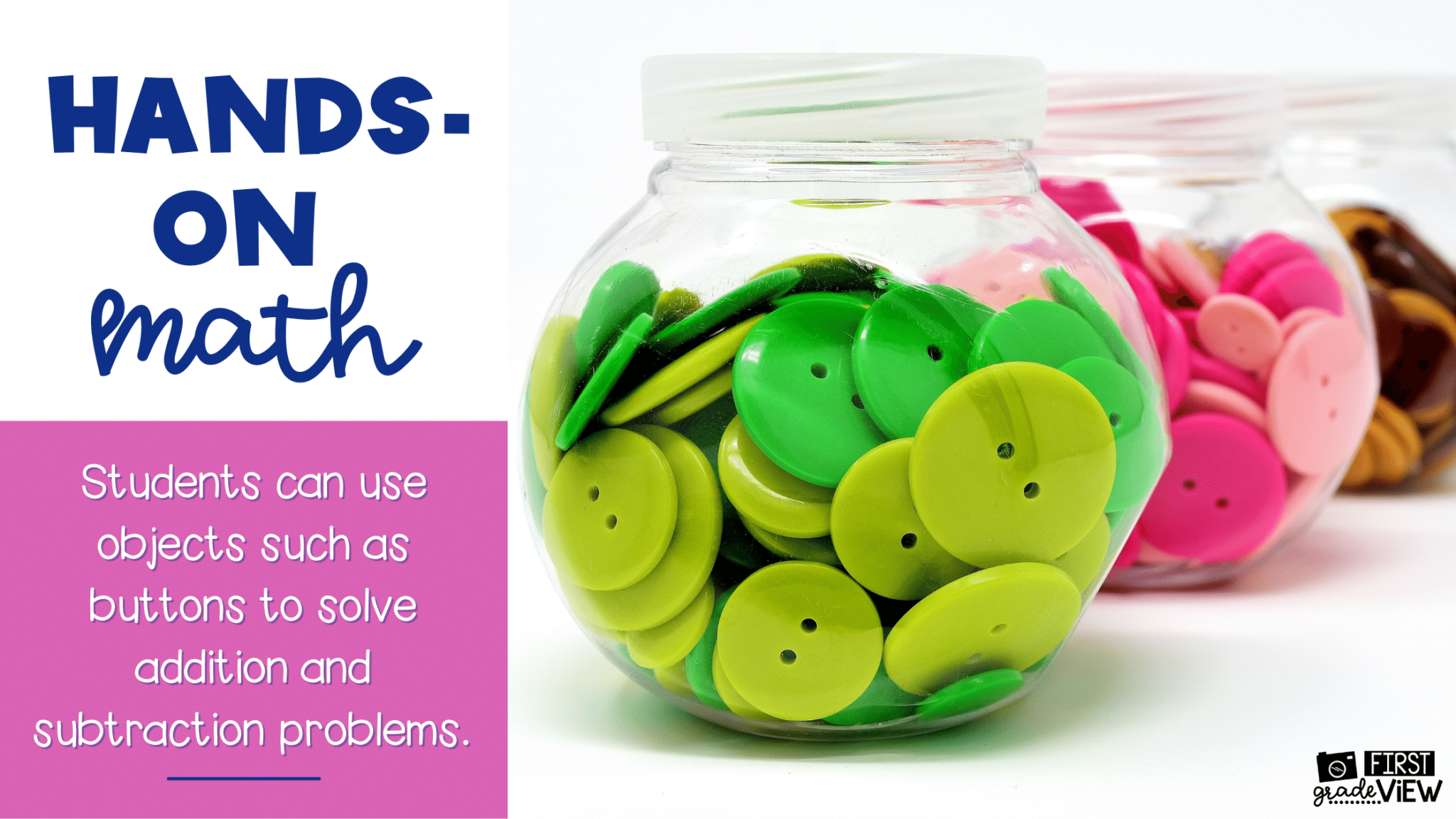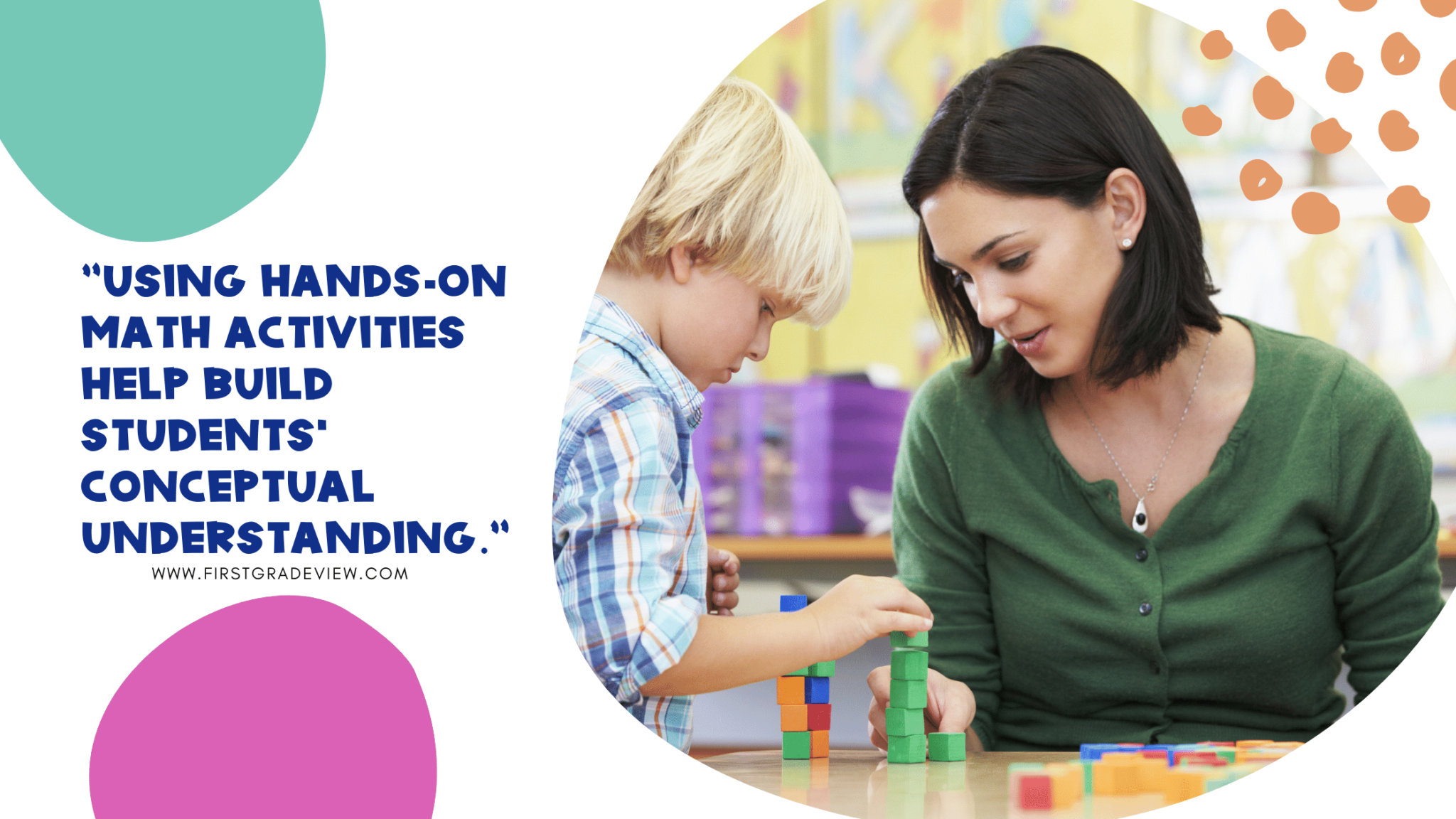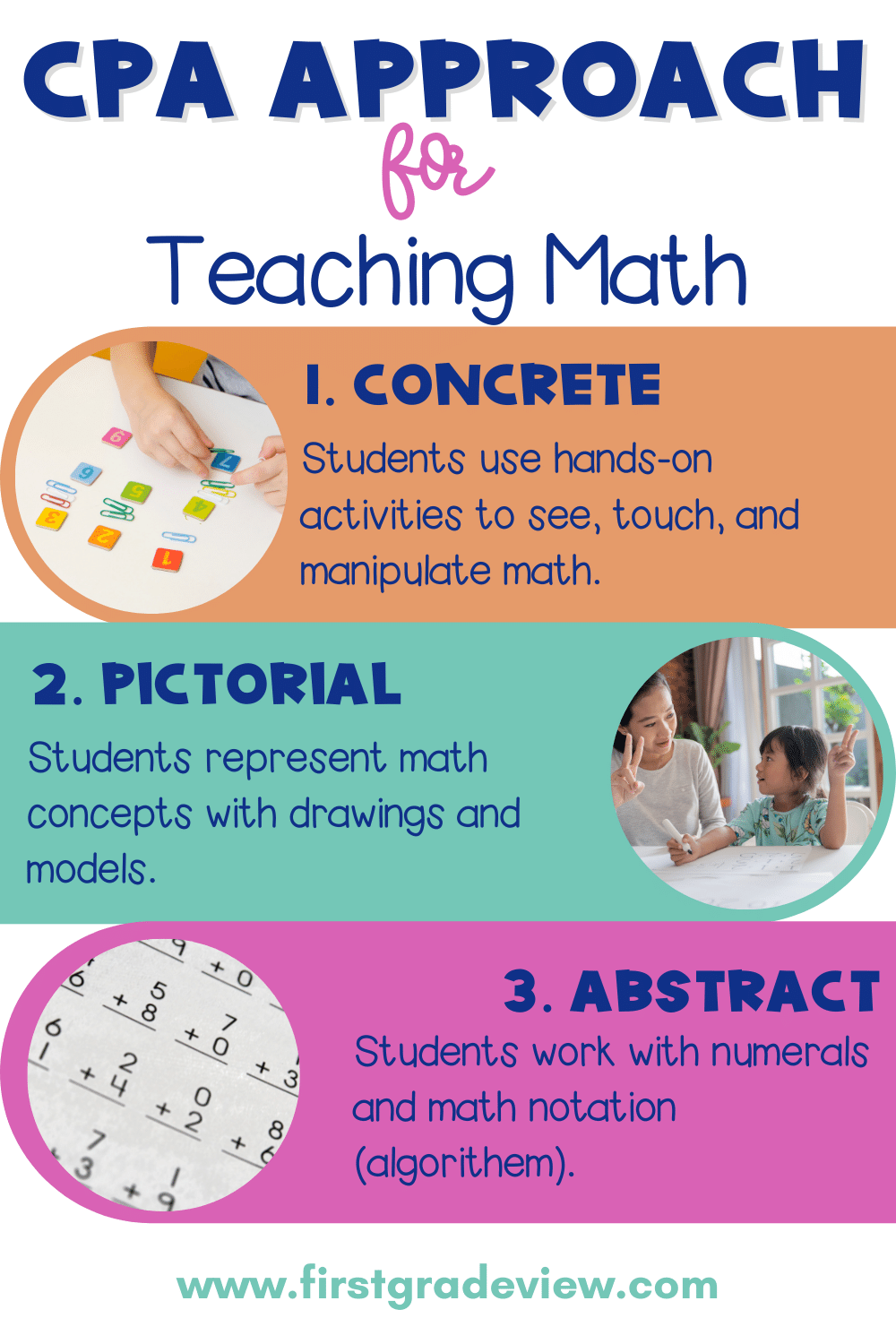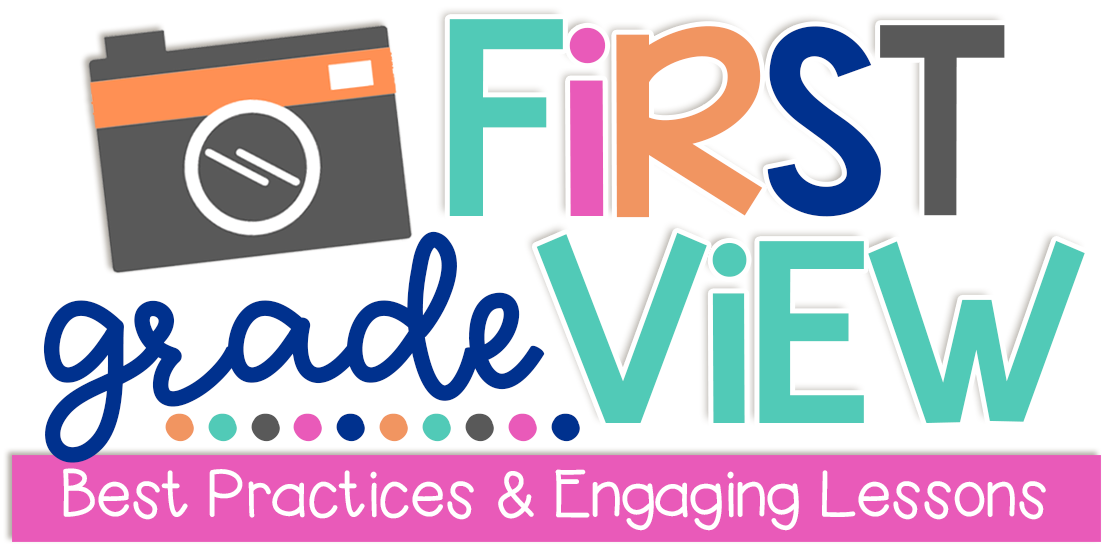Picture it. You have planned a hands-on math activity for your class. You are really excited because you feel this activity is going to build your students’ mathematical understanding about addition. Before the activity begins, you need to hand out the manipulatives your students will be using. You begin passing them out but it takes longer than expected. Your students finally begin the task. Everything is going well until…you run out of time and must cut the lesson short. Does this sound familiar? All teachers have experienced this at some point or another. The key from taking your hands-on math activity from zero to hero is organization.

What are hands-on math activities?
Hands-on math activities involve real objects often referred to as math manipulatives that students can physically touch as they work on a math concept. For example, when learning about addition, students may be given the following problem: There were 3 apples in the basket. Cruz put 2 more apples in the basket. How many apples are in the basket now? Students may use items such as buttons or counting bears to represent the apples in order to solve the problem. Using these manipulatives help students to visualize the addition happening and find the total or sum.

Why are hands-on math activities important?
Using hands-on math activities help build students' conceptual understanding. You may have heard about using the concrete, pictorial, abstract (CPA) approach to help students bridge their understanding of a mathematical concept. The concrete approach allows students to see, touch, and manipulate math. For example, students may work with small objects such as buttons when working on addition or subtraction. During a geometry unit, students may use geoboards to physically manipulate shapes using rubber bands. In all hands-on experiences, not only are students able to visualize the math concept, they are engaged in their learning which helps build a deeper understanding.

After students have spent some time in the concrete stage using a hands-on math activity, they are ready to move onto the pictorial stage. Students can now represent the math concepts with drawings and models. In this stage, students may draw pictures of 3 apples and 2 apples to show the addition of 3 and 2 makes 5. In their geometry unit, students may be drawing shapes to compose new shapes. Students are still able to “see” the math concepts but are no longer using hands-on manipulatives.
Once students have an understanding of the concrete stage, they are ready to move into the abstract stage. It is here that students are working with numerals and mathematical notation. Students are no longer using buttons or drawing apples to add. Instead they use the standard algorithm such as 3+2=5.

The nice thing about the CPA approach is that each stage provides scaffolding for students to bridge to the next stage. Additionally, students are able to build a conceptual understanding rather than just learning to carry out a set of procedures. Lastly, each stage is fluid and students can move back and forth between them when needed.
What are the benefits of doing a hands-on math activity?
Students can benefit from hands-on math activities in the following ways:
- Increased engagement: Students love doing hands-on learning activities. When students can see and touch their math they are more likely to stay on task and be engaged in the activity.
- Builds understanding: Hands-on math activities can bridge to the pictorial and abstract stages, by providing practice. This is especially helpful when students are encountering a new math concept.
- Strengthens math confidence: It is important to build our students' mathematical mindsets. Using hands-on activities provides the opportunity to improve their understanding and develop strategies. Hands-on activities help students see themselves as mathematicians and be able to justify their thinking.
How can you organize your math manipulatives?
When they work on a hands-on math activity, you want students to be able to start right away and be able to choose from appropriate manipulatives. I have found the best way to do this is by organizing math toolkits for your students. I was able to put these math toolkits together thanks to a Donors Choose project I got funded. Here’s what I put into our math toolkits at the beginning of the year:
- Two-sided color counters
- Homemade Rekenerek
- 20 unifix cubes (10 in one color and 10 in another color)
- Dry erase number line and open number line
- 2 dice
- Base ten blocks
- 120 Chart and Ten Frames (I love this dry erase version from Lakeshore)
- Dry erase marker
- Whiteboard eraser
- Math Toolkit Bag (These are the bags I order)
Throughout the year, I add more manipulatives as needed. For example, when we study telling time, I give each of my students a practice clock. They also make a paper practice clock in class that they can take home. When we work on our geometry unit, I pass out geoboards and rubber bands.
Virtual Math Manipulatives
If you do not have physical math manipulatives for your students to use, here are some sites for virtual math manipulatives:
Hopefully you are now ready to organize your materials to provide hands-on math opportunities for your students! If you enjoyed reading this post, be sure to also check out:
50+ Elementary Math Manipulatives for the Classroom
How to Accomplish a More Positive Student Centered Math Classroom






No Comments